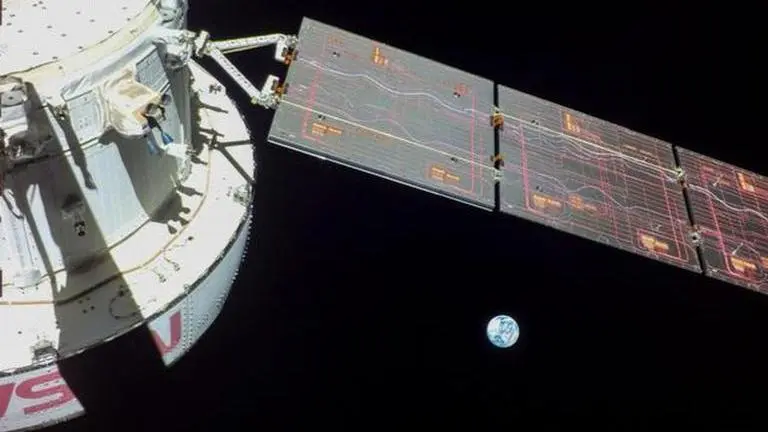Updated 27 November 2022 at 15:04 IST
Orion breaks NASA's Apollo 13 record of travelling the farthest distance from Earth
NASA revealed that Orion has broken the record set by Apollo 13's Odyssey spacecraft as it travelled over 4 lakh km beyond the Moon during Artemis 1.
- Science News
- 2 min read

NASA’s Orion spacecraft has broken the record of the farthest distance travelled by a human-rated spacecraft in over 50 years. The uncrewed capsule launched to the Moon for the Artemis 1 mission flew over 4,00,171 kilometers from Earth at 7:10 pm IST on November 26, breaking the record set by Apollo 13's "Odyssey" on April 15, 1970.
This feat was achieved as NASA inserted the spacecraft into the distant retrograde orbit (DRO) around the Moon before it swings for a journey back to Earth.
Today, @NASA_Orion will break the record for farthest distance of a spacecraft designed to carry humans to deep space and safely return them to Earth. This record is currently held by Apollo 13.
— NASA (@NASA) November 26, 2022
Hear from Apollo astronauts and flight directors on the future of #Artemis: pic.twitter.com/fH35MXFfS3
What's next for Orion?
Orion is currently on the 12th day of its mission which would end with the spacecraft splashing down into the Pacific Ocean on December 11. As of now, it is currently in the DRO, which is a path around the Moon where a spacecraft orbits the Moon in a direction opposite to the lunar orbit around the Earth. This path is called 'distant' because the spacecraft will be over 64,000 km above the lunar surface.
Talk about showing both sides of the story. Nice frontback, Orion.
— NASA (@NASA) November 25, 2022
On flight day 9, @NASA_Orion took these images looking forward to the Moon, and back home toward Earth.
More full-res images: https://t.co/pUudalErEr
Track #Artemis I in real time: https://t.co/fCVt3jyqwy pic.twitter.com/bnY0uXbWnh
The process of inserting Orion into the DRO began on November 26 when the mission teams fired its thrusters at 4:22 am IST. NASA says that prior to the orbit insertion burn, Orion was travelling over 90,000 km from the Moon, which is the farthest it will go beyond the lunar surface during Artemis 1. "While in lunar orbit, flight controllers will monitor key systems and perform checkouts while in the environment of deep space," NASA said in an official statement.
Advertisement
According to NASA, Orion will cover half the DRO in about three days from now and will harness the Moon’s gravitational force once again, combined with a precisely timed lunar flyby burn to slingshot toward Earth. Designed to carry astronauts in future missions, NASA is testing Orion's durability in deep space. The agency is monitoring Orion's propulsion systems, communication and navigation systems, systems and features to handle radiation events and most importantly the heat shield. The heat shield is equipped at the base of Orion which would protect astronauts during re-entry into the Earth's atmosphere. Artemis 1 will validate the heat shield that will have to endure temperatures up to 2,700°C.
Published By : Harsh Vardhan
Published On: 27 November 2022 at 15:05 IST
